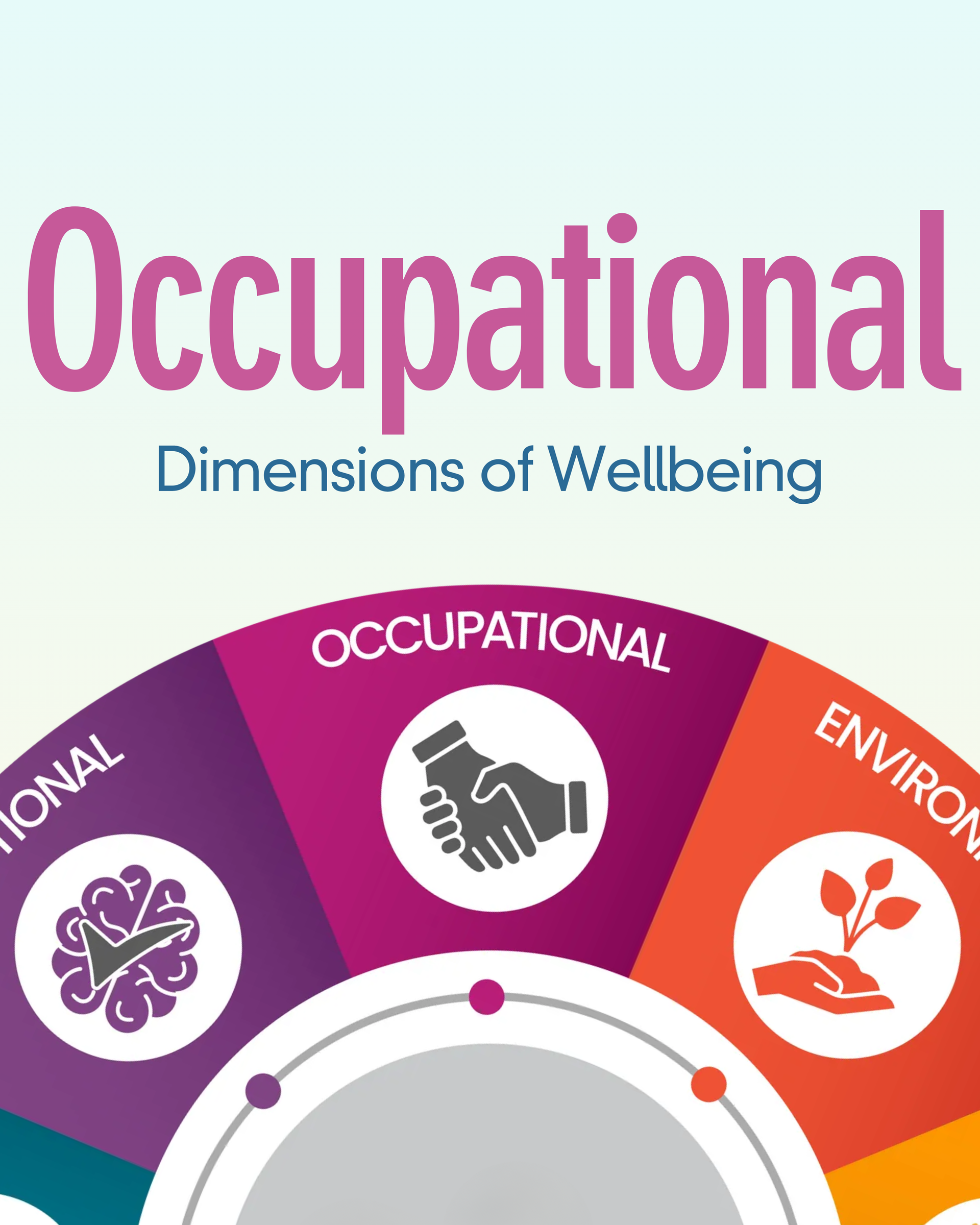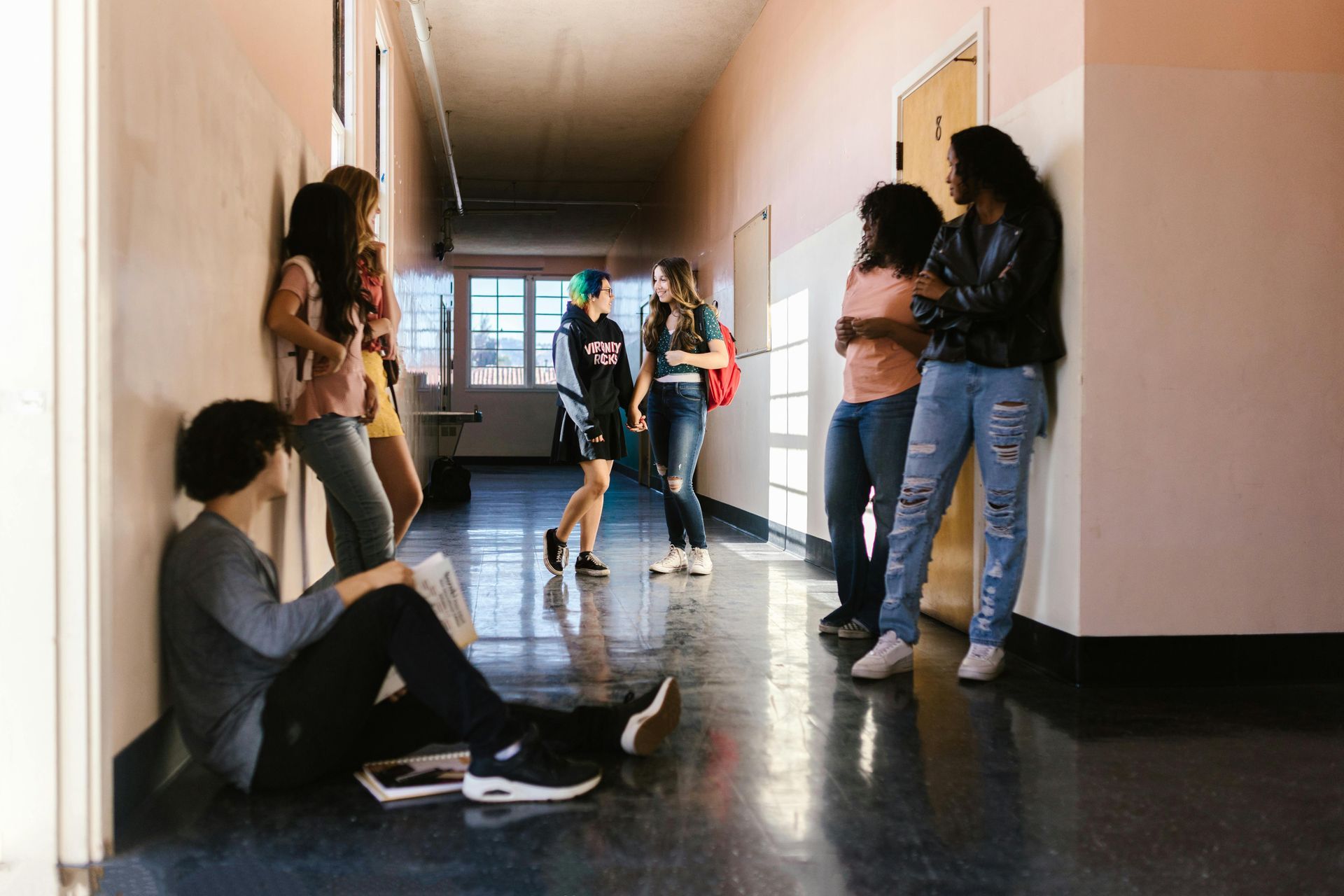The 8 Dimensions of Wellbeing: Occupational Wellbeing

When we talk about your “wellbeing” as a college student, we’re talking about more than having a good attitude or hitting the gym. Wellbeing is made up of eight interconnected dimensions that shape how we feel, function, and live. These include emotional, physical, social, intellectual, spiritual, environmental, occupational, and financial wellbeing. When one area is off, it can affect all the others.
In this post, we’re taking a closer look at the seventh dimension:
Occupational Wellbeing.

What Is Occupational Wellbeing?
Occupational wellbeing is about finding satisfaction, purpose, and a sense of alignment in your work—whether that’s a part-time job, an internship, your major, or simply the direction you’re headed. For college students, this doesn’t mean having your whole career figured out. It means feeling like what you’re doing now is helping you grow toward something.
This dimension is closely tied to identity and motivation. Do you feel excited about your studies or career path? Do your current roles (as a student, employee, volunteer, leader, etc.) feel like they matter to you? Are you learning and contributing in ways that align with your values and strengths?
Occupational wellbeing also includes how balanced your work is with the rest of your life and how supported you feel as you juggle responsibilities.
How Occupational Wellbeing Shows Up
This area of wellbeing looks different for everyone, but in general, you’re in a good place with your occupational wellbeing if:
- You feel engaged in your major, job, or extracurricular commitments.
- You see a connection between what you’re doing now and what you want in the future.
- You feel motivated to learn, grow, and contribute.
- You have at least some clarity about what kind of work feels meaningful to you.
- You’re not constantly burned out or overwhelmed by your workload.
When this dimension is strong, it can help you feel more confident, capable, and future-focused. Even if you don’t have all the answers, you feel like you’re on your way.
What to Watch For
It’s totally normal to question your major, feel unsure about your career path, or be stuck in a job that isn’t your dream. But occupational wellbeing can take a hit if you’re feeling directionless, overworked, or disconnected from your goals. Some signs to look out for:
- Dreading your classes, work, or responsibilities most days
- Feeling unsure why you're pursuing your current major or job
- Constantly stressed about performance, deadlines, or pleasing others
- Comparing your path to everyone else’s and feeling “behind”
- Feeling like your work isn’t aligned with your interests or values
- Burnout, lack of motivation, or going through the motions without joy

These feelings are invitations to pause and reassess. College is a time for exploration, not perfection. You don’t need to lock in a “forever plan,” just start paying attention to whether your current path feels fulfilling, challenging, and yours.
Coming Up Next:
Financial Wellbeing










